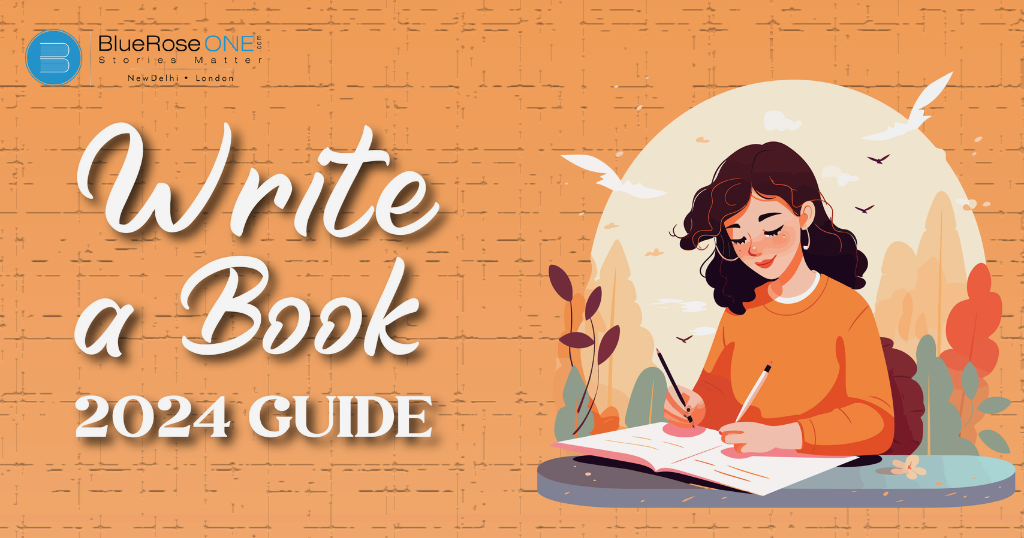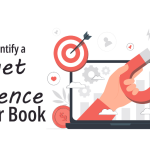Starting on the journey to write a book is a life-changing decision, offering the potential to influence countless lives and make a lasting impact. However, the path to becoming an author is no walk in the park.
The process of writing a book is filled with challenges that might tempt you to throw in the towel. Whether it’s grappling with a lack of ideas, losing interest in your own message, succumbing to distractions, or feeling overwhelmed by the enormity of the task, the hurdles are numerous.
Imagine if you had a roadmap, guiding you precisely on:
- Where to start your writing journey.
- The detailed steps involved in each phase.
- Strategies to conquer fear, procrastination, and writer’s block.
- Techniques to prevent that overwhelming feeling from taking over.
Writing a book is within your grasp, and it might happen sooner than you think. In today’s digital age, you have an array of writing tools at your disposal to expedite the process.
Unlocking the door to book writing success involves following a proven, straightforward, step-by-step plan. In this journey, you’ll have to refine your writing techniques that may seem a little slow as a process. However, armed with a reliable blueprint, you can overcome obstacles and make significant progress in your book-writing journey.
Allow us to share a little research and a personal approach to how to write a book, providing insights that have the potential to transform your writing experience. The goal is to offer you a guiding light through the often challenging process of turning your book idea into a reality. So, let’s dive into the steps that can redefine your book-writing journey.
You may also like: Is Kindle Direct Publishing right for Your Next Book?
1. Where to start your writing journey
The journey of writing a book requires thoughtful preparation—a step that, in the long run, you’ll appreciate and thank yourself for. Before diving into such a monumental task, consider the importance of laying a solid foundation. Comparatively, attempting to cut down a vast grove of trees with just an axe would be impractical. You need the right tools—a chainsaw, perhaps multiple, kept sharp and fueled adequately.
The analogy is clear: don’t overlook the foundational aspects of the book-writing process.
- Step 1: Establish Your Writing Space Creating a conducive writing space is crucial. Contrary to the belief that you need a dedicated sanctuary. The lesson here is that you make do with what you have. Some of your most productive days could be spent on a sagging couch.
- While a more comfortable and private space is preferable, the key is adaptability. Real writers can write anywhere. Some thrive in restaurants or coffee shops. Writing in a noisy environment builds resilience, making any other setting seem ideal. The point is that your writing space is flexible, and the key is to start writing regardless of your surroundings.
- Step 2: Assemble Your Writing Tools In the world of writing, efficiency is paramount. There was no luxury of handwriting and then typing for layout; everything went straight from the keyboard. This practice has endured in my book writing, primarily done at a keyboard.
- While most authors follow suit, some still handwrite initial drafts and then transition to digital formats. However, presenting a typewritten or handwritten manuscript to a publisher is unthinkable in today’s industry. Microsoft Word is the standard, ensuring your submissions align with the industry’s expectations.
- For a robust electronic organizing system, Scrivener stands out, seamlessly interacting with Word files. Its versatility spans both PCs and Macs. Keep in mind that Scrivener has a learning curve, so it’s beneficial to acquaint yourself with its features before diving into writing.
- Additionally, various tools cater to specific book-writing needs. Explore the popular ones listed in dedicated blogs and writing tools pages for a comprehensive selection.
- Step 3: Equip Your Writing Space If you are handwriting your drafts, invest in quality paper, pencils, and erasers. Regardless, a computer is essential for research and communication with agents, editors, and publishers. Opt for the latest, high-capacity, and speedy computer within your budget. Anticipate your workspace needs. Stock up on stationery, organization tools, and peripherals like staplers, rulers, tape dispensers, and clocks. Create a comfortable and well-equipped environment with ergonomic furniture. A good chair, especially, is non-negotiable for prolonged writing sessions. Prioritize posture and comfort; your creativity shouldn’t be hindered by discomfort. Whether or not you currently use all the listed items, make a comprehensive list of your anticipated needs. As you progress in your writing journey and gain financial traction, continue upgrading your workspace. Remember, the key is to start writing, making the most of what you have, and evolving your setup along the way.
You may also like: List of 15 Prestigious Literary Awards in 2024

Start your writing journey in 2024 now
2. The detailed steps involved in each phase
- Step 1: Deconstructing the Monolith The initial challenge is to shift one’s perspective from viewing the book as a 400-page monstrosity to recognizing it as a composition of various small components. Writing cannot occur in a single Herculean effort any more than one could consume an entire elephant in a solitary sitting. The goal is to simplify the process, acknowledging that progress is incremental. While the first week may yield a modest digit of pages, a few months down the line, the tally could extend into the second hundred. The strategy is to distill the overarching book idea from a page or so into a single sentence—a concise premise. The specificity of this one-sentence premise becomes instrumental in maintaining focus during the writing journey. However, before progressing to this stage, one must decisively settle on the “big idea.”
- Step 2: Deciphering the Big Idea For a concept to be deemed book-worthy, it must be nothing short of extraordinary. The author must be fervently passionate about the chosen subject, something that not only motivates them but also captivates anyone they share it with. This step is critical, especially for those who have encountered stumbling blocks in completing a book. A flawed or commonplace premise may be suitable for a blog post or an article but might falter when attempting to sustain an entire book. Consider iconic works like “The Hunger Games,” “Harry Potter,” or “How to Win Friends and Influence People.” The contemporary literary landscape is saturated, demanding a premise that elicits excitement, fascination, and anticipation. The litmus test for a winning idea is its ability to linger in the author’s mind, evolving with each contemplation. Trusted opinions from friends and family serve as valuable benchmarks. The right concept effortlessly resonates and compels the author to write, ensuring commitment to the journey from start to finish.
- Step 3: Blueprinting with an Outline Writing a book without a clear roadmap often leads to chaos. Whether adopting the role of a pantser—writing by the seat of one’s pants—or an outliner, a basic structure is indispensable. Even fiction writers benefit from a directional document that provides both structure and a safety net. For nonfiction endeavors, an outline is non-negotiable. Agents and publishers demand this as part of the proposal, seeking assurance that the author comprehends the trajectory of their work. The importance of an outline extends to fiction as well. Dubbed the “Marathon of the Middle,” writers commonly lose interest in their books due to insufficiently exciting ideas. The novel structure, illustrated and adaptable, holds true for nonfiction, emphasizing the significance of arranging points and evidence to elevate tension and deliver a substantial payoff.
- Step 4: Sanctifying Writing Time Establishing a firm writing schedule is imperative for making tangible progress. Ideally, dedicating a minimum of six hours per week to the craft ensures steady advancement. Whether structured as two-hour sessions three times a week, three-hour sessions twice a week, or six one-hour sessions, consistency is key. Developing a habitual pattern, if possible, fortifies the writing routine. A crucial reminder is the necessity of carving out writing time from a crowded calendar. While family should always be a top priority, other commitments may need reevaluation. It is a matter of making time for what truly matters. Successful writers prioritize their craft, and as writing becomes a habit, progress becomes inevitable.
- Step 5: Consecrating the Deadline Deadlines, often the driving force behind productivity, instill a sense of urgency. While established authors may have contractual deadlines, first-time writers must set their own and treat them as sacred. Accountability plays a pivotal role, involving spouses, loved ones, or trusted friends to ensure commitment. Determining the number of pages to produce per writing session, coupled with a realistic timeline, allows for adjustments. The key is to set a deadline, make it realistic, and uphold its sacredness.
- Step 6: Embracing Procrastination Productively Surprisingly, embracing procrastination rather than fighting it can be a productive approach. Acknowledging its inevitability and scheduling it on the calendar prevents unnecessary fretting. Procrastination, when seen as part of the creative process, allows the subconscious to work on the book even during moments of delay. However, it is crucial not to let procrastination escalate to a point where it jeopardizes the sanctity of the deadline. The secret lies in maintaining a balance, adjusting page quotas if necessary, and ensuring that the writing capacity is never exceeded. Procrastination, when managed effectively, contributes to the overall creativity of the project.
- Step 7: Eliminating Distractions for Unwavering Focus Easily succumbing to distractions is a common challenge for many writers. Checking emails, social media, or diving into unrelated content can derail writing sessions. To counteract these timewasters, various apps like Freedom, FocusWriter, StayFocusd, and WriteRoom can be employed to block distractions during designated writing hours. Maintaining focus is crucial for optimal productivity.
- Step 8: Meticulous Research for Credibility Research is an integral part of the writing process, whether crafting fiction or nonfiction. For fiction, details, logic, and historical accuracy are paramount for believability. In nonfiction, even when writing about a familiar subject, accurate facts bolster the finished product. Reliable research resources, such as World Almanacs, Merriam-Webster Thesaurus, and WorldAtlas.com, provide a wealth of information to enhance the quality of the writing.
- Step 9: Affirming Your Identity as a Writer Self-identification as a writer is a powerful affirmation that boosts confidence and silences the inner critic. Waiting for an arbitrary level of accomplishment before embracing the title of writer is counterproductive. Whether a novice or seasoned writer, acknowledging oneself as a writer from the outset instills the confidence needed to persevere through the entire book-writing journey. Say it aloud, write it down—whatever it takes to solidify your identity as a writer.
You may also like: Book Writing Tools That Actually Make a Difference
3. Strategies to conquer fear, procrastination, and writer’s block
Embarking on the actual process of writing a book is a thrilling yet challenging endeavor. This section unravels the intricacies of the writing journey, providing crucial insights and practical steps to ensure that your manuscript resonates with readers.
- Step 1: Prioritize the Reader at Every Turn
The cardinal rule of successful writing is to always think reader-first. This guiding principle should be etched in your consciousness, influencing every decision you make about your manuscript. It’s not about prioritizing yourself, the book, or appeasing editors, agents, or publishers—it’s about the reader, first, last, and always.
When readers are moved by a book, it often traces back to this fundamental principle. If a scene bores you, it likely does the same for the reader, and it needs a revamp or elimination. Decisions about where to take the story, what to say, or what to write next should all be filtered through the lens of reader-centric thinking.
Understanding your audience is pivotal. Consider their rough age, general interests, loves, hates, and attention span. In moments of uncertainty, reflect on your preferences and experiences. Pleasing your reader is best achieved by creating content that you, as a writer, would want to read. Trust that your tastes align with a broader audience. - Step 2: Uncover Your Writing Voice
Discovering your writing voice need not be a convoluted process. It’s an intimate reflection of your authentic self, akin to the way you sound when passionately recounting the coolest thing that ever happened to you. Answering a few key questions can reveal your unique voice:- What’s the coolest thing that’s ever happened to you?
- Who’s the most important person you told about it?
- What did you sound like when you did?
This voice, the one that resonates when you’re at your most engaged, is your writing voice. If you’re a fiction writer and the narrator isn’t you, apply the same exercise on behalf of the narrator to master their distinctive voice.
- Step 3: Craft a Captivating Opener
The weight of crafting the perfect opening line can be daunting, but its significance cannot be overstated. This is not a detail to be postponed and revisited later; it sets the tone for the entire narrative. A compelling opener is the key to igniting your confidence and building momentum.
Whether writing fiction or nonfiction, your first sentence is unlikely to be surpassed in importance. Examples of iconic openers abound:- George Orwell’s “1984”: “It was a bright, cold day in April, and the clocks were striking thirteen.”
- J.K. Rowling’s “Harry Potter and the Philosopher’s Stone”: “Mr. and Mrs. Dursley, of number four, Privet Drive, were proud to say that they were perfectly normal; thank you very much.”
These openings not only captivate but also establish the narrative’s essence. Craft an opener that resonates with your story, ensuring it encapsulates the spirit of your work and entices readers to delve deeper.
- Step 4: Infuse Conflict and Tension
Conflict is the lifeblood of storytelling, captivating readers and propelling them through your narrative. This principle extends beyond fiction, applying to nonfiction genres as well. In a novel, a lack of conflict leads to disinterest. Introduce a deep-seated rift in relationships, a misunderstanding, or an injustice to keep readers engaged.
Even in nonfiction, tension can be injected strategically, setting the stage for later revelations. Examining bestsellers across genres showcases how authors skillfully maintain reader engagement through tension. It’s the secret sauce that ensures your audience stays hooked, eagerly turning pages to discover what unfolds. - Step 5: Silence the Internal Editor in Your First Draft
Perfectionism often hinders the creation of the first draft. The incessant voice in your head critiquing every word and sentence is your internal editor, and during the initial draft, it needs to be silenced. The focus at this stage is on getting the story or message down without succumbing to the pressure of crafting a flawless manuscript.
Visualize the first draft as a raw slab of meat that will be carved into shape later. The goal is to create, not perfect. Adopt different mental hats for creating and revising, ensuring you don’t let the self-editor slow down your creative flow. Some authors prefer writing the entire first draft before diving into revisions, while others alternate between creating and revising. - Step 6: Navigate the Marathon of the Middle
Many aspiring authors falter in what can be described as the Marathon of the Middle. For novelists, this phase is marked by a struggle to sustain the initial excitement, leading to padding and a potential loss of reader interest. Nonfiction writers face similar challenges in maintaining momentum throughout their work.
The solution lies in meticulous outlining during the initial stages. Ensuring that the middle chapters are as magnetic as the first and last is crucial. For novelists, this requires strategizing the progression of points or subplots to avoid monotony. Regardless of the genre, it’s essential to remember the core message and purpose that ignited the writing journey. - Step 7: Craft a Memorable Ending
A compelling ending is paramount for both fiction and nonfiction works. While the emotional intensity may differ, the conclusion must leave a lasting impression. Rushing the ending is a pitfall to avoid. Take the time to deliver the promised payoff, as readers have invested in your narrative.
Never settle for mediocrity; revise until you’re thrilled with every word. Unpredictability in the conclusion should be coupled with fairness and logic, ensuring readers feel delighted rather than cheated. Whether in fiction or nonfiction, the heart should prevail over the head, leaving a profound impact on your audience.
You may also read: Negative Adjectives to Describe People: Examples and Meanings
4. Techniques to prevent that overwhelming feeling from taking over
Embrace Ferocious Self-Editing
The harsh reality of the publishing world is that agents and editors can often gauge the potential of a manuscript within the first two pages. While this might seem unfair, it underscores the significance of crafting a polished opening. Agents and editors swiftly discern the level of editing required to render those initial pages publishable. If the prospect of substantial editing seems daunting, they may decide against investing in a full-length manuscript.
To maximize the chances of capturing an agent’s or editor’s attention, writers must become ferocious self-editors. This involves a meticulous approach to refining the manuscript.
- Omit unnecessary words: trim excess words that do not contribute to clarity or meaning. Conciseness enhances readability. Example: “He thought in his mind…” becomes “He thought…”
- Choose Simplicity: Opt for straightforward words over complex alternatives. This ensures accessibility for a broader audience. Example: Replace obscure words with simpler alternatives without sacrificing meaning.
- Avoid Redundancies: Eliminate subtle redundancies that dilute the impact of your writing. Example: Instead of “She walked through the open door,” use “She walked through the door.”
- Hedge Verbs Sparingly: Minimize the use of hedging verbs like “almost frowned” or “sort of jumped.” Opt for decisive and vivid language. Example: Replace “sort of jumped” with “leaped” for clarity and strength.
- Mindful Use of ‘That’: Restrict the use of the word ‘that’ to instances where it is indispensable for clarity. Example: Evaluate each usage of ‘that’ and eliminate unnecessary instances.
- Eliminate Excessive Adjectives: Strive for precision and clarity by pruning unnecessary adjectives. Example: Instead of “the large, sprawling mansion,” use “the mansion” or specify relevant details.
- Show, Don’t Tell: Engage readers by illustrating scenes and emotions rather than simply stating them. Example: Instead of saying “He was nervous,” show his nervousness through actions and reactions.
- Limit Stage Direction: Avoid overwhelming readers with minute details of every character’s movements. Example: Provide essential actions and gestures, focusing on the most impactful details.
You may also like: Fantasy Books complete publishing guide in India 2024

Best Techniques to Write in 2024
These are foundational principles, and the key to effective self-editing lies in the writer’s ability to discern when improvement transitions into unnecessary change. Becoming an author entails the skill of recognizing when your writing is not just different but genuinely better.
Remember, self-editing is an iterative process. Once the initial round of revisions is complete, seek feedback from beta readers or writing peers. Their fresh perspectives can unveil aspects that might have eluded your scrutiny. The art of rewriting is a continuous refinement, refining the manuscript until every word serves its purpose with precision.
As we complete our journey through the arts of writing, remember that every pen stroke or keyboard tap is a step closer to realising your creative masterpiece. Accept the rewriting process, use the chisel of self-editing with skill, and watch your story blossom as a masterpiece in the literary tapestry.
The world eagerly awaits your narrative. May your writing path be filled with originality, resilience, and a firm trust in the power of your words. Onward, brother scribe, to the heights of literary excellence.
Publish your book with BlueRoseONE and become a bestselling author. Don’t let your dream of becoming an author fade away, grab the opportunity now and publish your book – be it fiction, non fiction, poetry or more.
You may also like: Exploring English Literature: Literary Landscapes
















